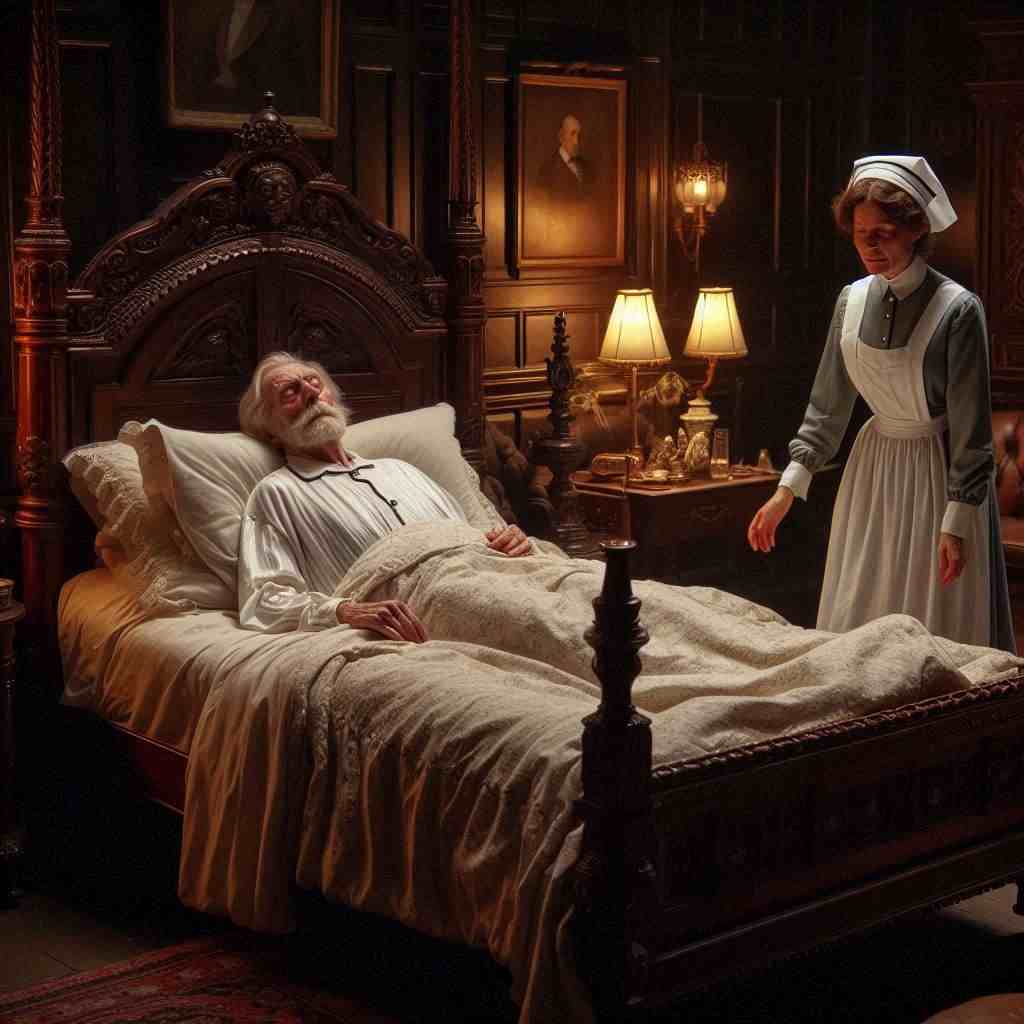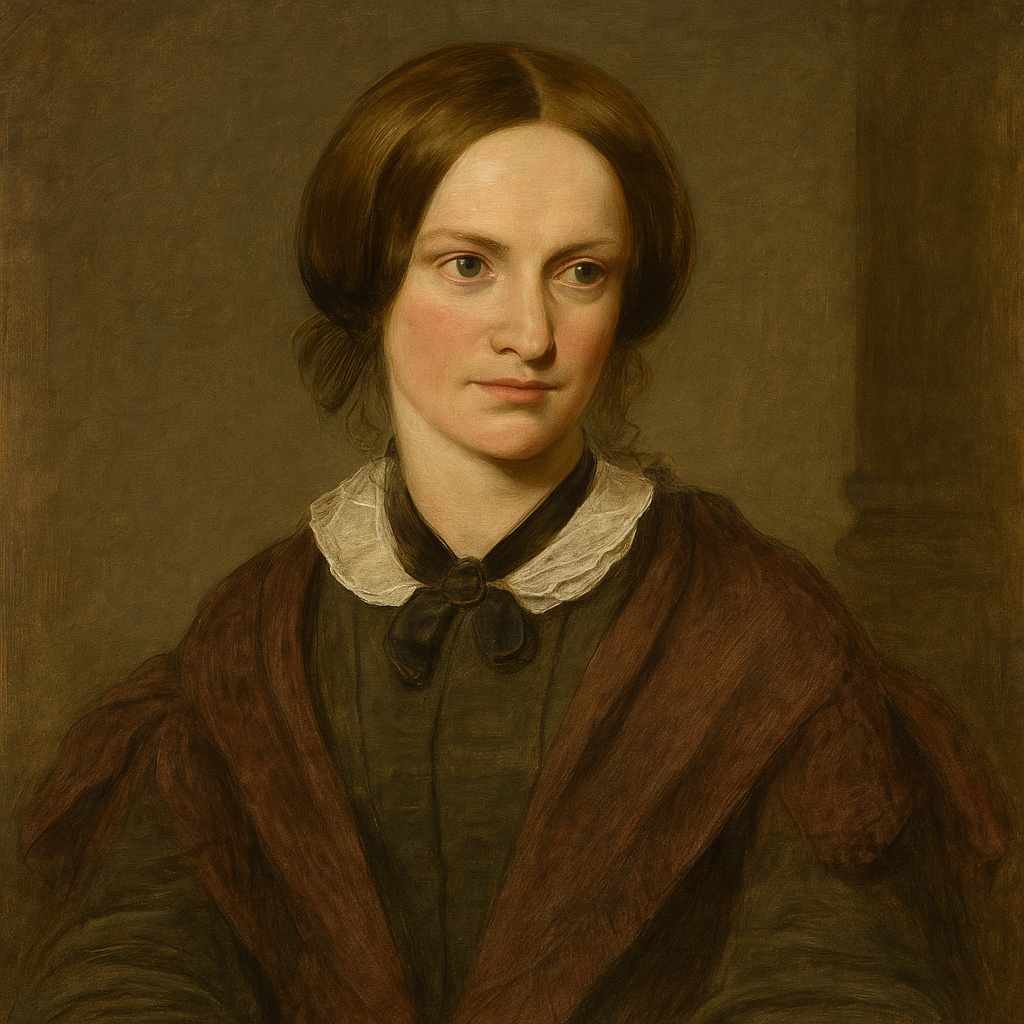The Nurse believed the sick man slept
Charlotte Brontë
1816 to 1855

The Nurse believed the sick man slept
For motionless he lay
She rose & from the bed-side crept
With cautious step away
Charlotte Brontë's The Nurse believed the sick man slept
Introduction
Charlotte Brontë, a luminary of Victorian literature, is primarily celebrated for her groundbreaking novel "Jane Eyre." However, her poetic oeuvre, though less renowned, offers a rich tapestry of emotions, social commentary, and linguistic prowess that merits scholarly attention. This essay delves into a close reading and analysis of Brontë's brief yet poignant poem, "The Nurse believed the sick man slept," exploring its thematic depth, formal characteristics, and contextual significance within the broader framework of Brontë's literary canon and the Victorian zeitgeist.
Historical and Literary Context
To fully appreciate the nuances of this poem, one must first situate it within its historical and literary milieu. Composed during the Victorian era, a period marked by rapid industrialization, social upheaval, and a preoccupation with mortality, Brontë's work reflects the anxieties and concerns of her time. The poem's focus on illness, caretaking, and the liminal space between life and death resonates with the Victorian fascination with mortality, a theme that permeates much of the literature of this period.
Moreover, Brontë's personal experiences with illness and loss undoubtedly inform this work. Having witnessed the deaths of her siblings and living with chronic health issues herself, Brontë was intimately acquainted with the realities of sickness and the role of caretakers. This biographical context imbues the poem with a sense of authenticity and emotional depth that transcends its concise form.
Formal Analysis
Despite its brevity, "The Nurse believed the sick man slept" demonstrates Brontë's mastery of poetic form. Composed of a single quatrain, the poem adheres to a strict ABAB rhyme scheme, a choice that belies its thematic complexity. The use of iambic tetrameter, with its regular rhythmic pattern, creates a sense of inevitability and progression that mirrors the nurse's actions and the underlying tension between life and death.
The poem's opening line, "The Nurse believed the sick man slept," immediately establishes a sense of dramatic irony. The use of the past tense "believed" suggests a discrepancy between perception and reality, foreshadowing the revelation to come. This tension is sustained throughout the quatrain, culminating in the nurse's "cautious step away," a phrase that encapsulates both the physical act of departure and the metaphorical distancing from the truth of the situation.
Brontë's choice of diction is particularly noteworthy. The juxtaposition of "sick man" and "slept" in the first line creates a euphemistic ambiguity that persists throughout the poem. The verb "crept" in the third line further reinforces this sense of caution and uncertainty, its sibilant sound echoing the nurse's quiet movements.
Thematic Exploration
At its core, "The Nurse believed the sick man slept" is a meditation on the nature of perception, reality, and the human response to death. The poem's central irony—the nurse's misinterpretation of the patient's state—serves as a metaphor for the broader human tendency to shy away from the harsh realities of mortality.
The figure of the nurse embodies this very human impulse. Her belief in the patient's sleep, rather than acknowledging the possibility of death, can be read as a form of self-protective denial. The "cautious step away" in the final line takes on added significance in this light, representing not just a physical withdrawal but an emotional and psychological retreat from the confrontation with mortality.
This theme of misperception extends beyond the individual characters to encompass broader societal attitudes towards death and illness in Victorian England. The poem subtly critiques the tendency to sanitize or euphemize death, a practice common in Victorian society where the realities of mortality were often shrouded in elaborate mourning rituals and coded language.
Gender and Power Dynamics
A closer examination of the poem reveals subtle but significant commentary on gender roles and power dynamics in Victorian society. The nurse, presumably female given the gendered nature of the profession at the time, is positioned as the active agent in the poem. She is the one who "rose" and "crept," her actions and perceptions driving the narrative.
However, this agency is complicated by the nature of her role and her misperception of the situation. As a caretaker, the nurse occupies a position of responsibility, yet her failure to recognize the true state of the "sick man" suggests a limitation to her power or understanding. This dynamic reflects the complex position of women in Victorian society, particularly in professional roles, where they were granted certain responsibilities but often denied full authority or recognition.
The "sick man," in contrast, is entirely passive, described only through the nurse's perception of him. This passivity, juxtaposed with the designation "rich man" in some versions of the poem, hints at class dynamics and the power of wealth even in the face of illness and death.
Symbolism and Imagery
Brontë's use of symbolism and imagery in this brief poem is remarkably dense and effective. The sickbed itself becomes a potent symbol, representing the threshold between life and death. The nurse's movement away from this liminal space can be read as a metaphorical rejection of this threshold, an attempt to maintain the illusion of life in the face of encroaching death.
The imagery of sleep, with its associations of rest and renewal, serves as a poignant counterpoint to the reality of death. This conflation of sleep and death echoes classical and biblical traditions, where death is often euphemistically referred to as a form of sleep. Brontë's invocation of this trope adds layers of cultural and literary resonance to the poem.
Narrative Technique and Perspective
The poem's narrative technique is particularly sophisticated given its brevity. Told from a third-person perspective, it nevertheless manages to convey a sense of interiority through its focus on the nurse's beliefs and actions. This narrative choice allows Brontë to maintain a degree of ambiguity about the true state of the "sick man" while simultaneously highlighting the nurse's misperception.
The temporal structure of the poem is also noteworthy. Although it describes a sequence of events, the use of the past tense throughout creates a sense of retrospective narration. This technique adds to the poem's air of inevitability and foreshadowing, suggesting that the truth of the situation has already been revealed in some future moment beyond the scope of the quatrain.
Comparative Analysis
To fully appreciate Brontë's achievement in this poem, it is instructive to consider it in relation to her other works and those of her contemporaries. The themes of illness, death, and the limitations of human perception recur throughout Brontë's oeuvre, from the typhus epidemic in "Jane Eyre" to the extended meditation on mortality in her poem "Life."
However, "The Nurse believed the sick man slept" stands out for its economy of language and its focus on a single, pivotal moment. In this respect, it bears comparison to Emily Dickinson's more famous works on death, such as "Because I could not stop for Death." Both poets demonstrate an ability to distill complex philosophical and emotional truths into brief, imagistic poems.
Conclusion
In conclusion, Charlotte Brontë's "The Nurse believed the sick man slept" reveals itself to be a work of remarkable depth and complexity despite its concise form. Through its deft use of poetic techniques, rich symbolism, and engagement with themes of perception, mortality, and human nature, the poem offers a microcosm of Brontë's broader literary concerns and a reflection of Victorian cultural anxieties.
The poem's enduring power lies in its ability to encapsulate a moment of profound human experience—the confrontation with death and our attempts to deny or defer it—in just four lines. It stands as a testament to Brontë's skill as a poet and her acute understanding of the human condition.
As we continue to grapple with questions of mortality, care, and the limitations of human perception in our own era, Brontë's poem remains startlingly relevant. It invites us to consider our own responses to illness and death, our capacity for self-deception, and the complex dynamics that underpin our social and professional relationships.
In the final analysis, "The Nurse believed the sick man slept" is not merely a footnote in Brontë's literary career but a fully realized work of art that rewards close reading and analysis. It demonstrates that in poetry, as in life, the most profound truths can often be found in the briefest of moments, the smallest of gestures, and the spaces between what is said and what is left unspoken.
This text was generated by AI and is for reference only. Learn more
Want to join the discussion? Reopen or create a unique username to comment. No personal details required!



Comments
No comments yet. Be the first to comment!